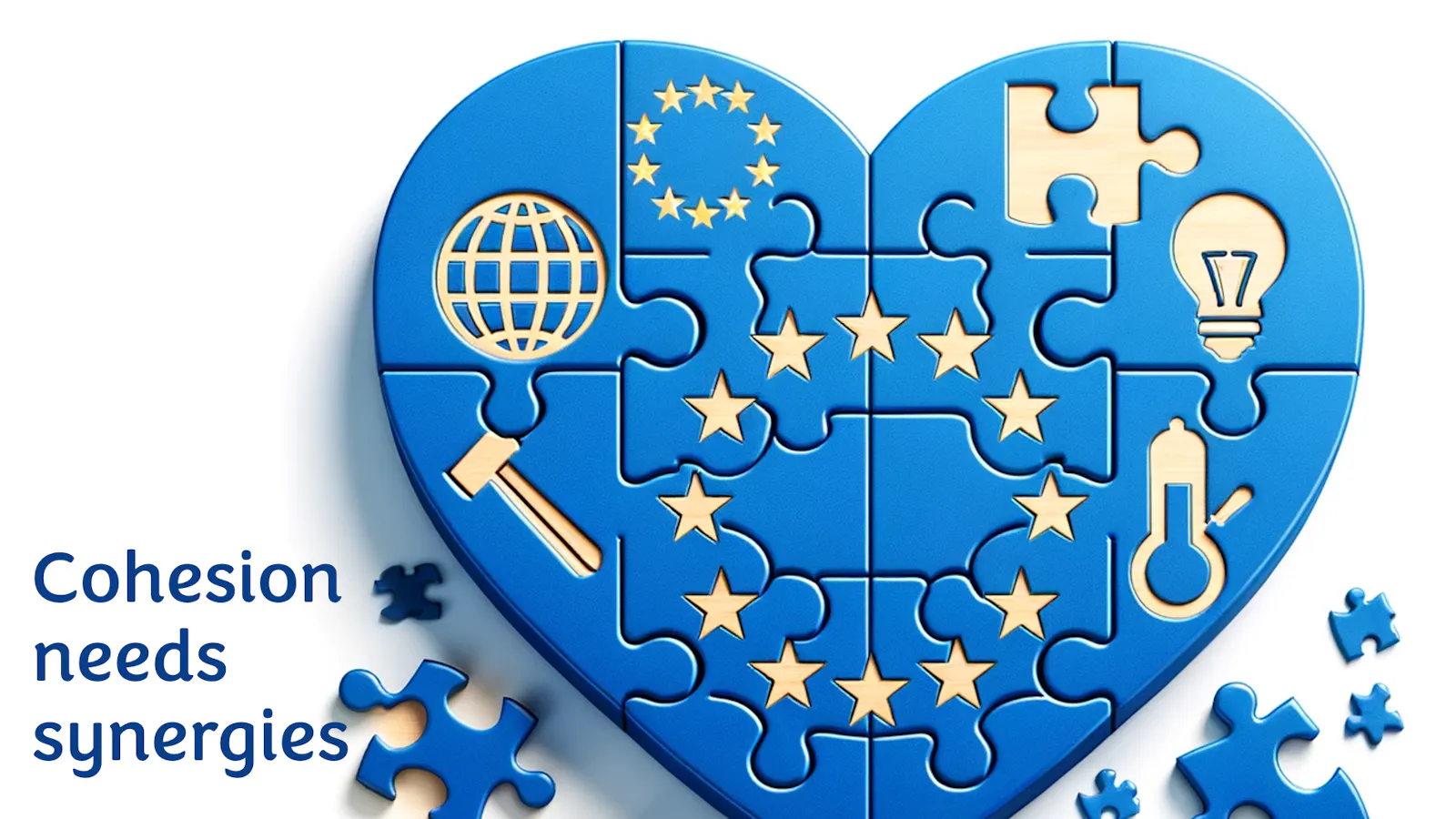Cohesion needs synergies
February 2024

EU Cohesion Policy is not just an economic instrument. It is also about unity and solidarity in the EU. It's designed to reduce disparities, foster balanced development, and ensure that all places and people can benefit from the EU's collective progress. In an era marked by complex challenges and rapid technological advancements, this policy becomes even more significant. It stands at the forefront of the digital, green and demographic transitions, as well as the fight against rising Euroscepticism, promoting a sense of belonging and shared prosperity. By making the benefits of EU membership tangible and widespread, it reinforces a strong, cohesive Europe.
Cohesion Policy increasingly needs to evolve to address interconnected European challenges. The policy's effectiveness hinges on its synergy with other EU policies. Whether it’s combating climate change, driving digital transformation, mastering demographic change or fostering social inclusion, these challenges transcend borders and sectors, necessitating a coordinated response. The interplay between various policies, from environmental to technological, underpins the EU's ability to deliver comprehensive and equitable progress for all its regions.
Cohesion Policy contributing to other policy objectives
Cohesion Policy operates in conjunction with other EU and national policies. It plays a vital role in realising EU objectives and contributing to a range of broader EU objectives. Very early on, it contributed to sustainable development and more recently to reaping potential in regions, strengthening their resilience to emerging challenges and accompanying them in transitions. This includes current transitions and challenges, such as:
To read this post you'll need to become a member. Members help us fund our work to ensure we can stick around long-term.
See our plans (Öffnet in neuem Fenster)
Bereits Mitglied? Anmelden (Öffnet in neuem Fenster)


